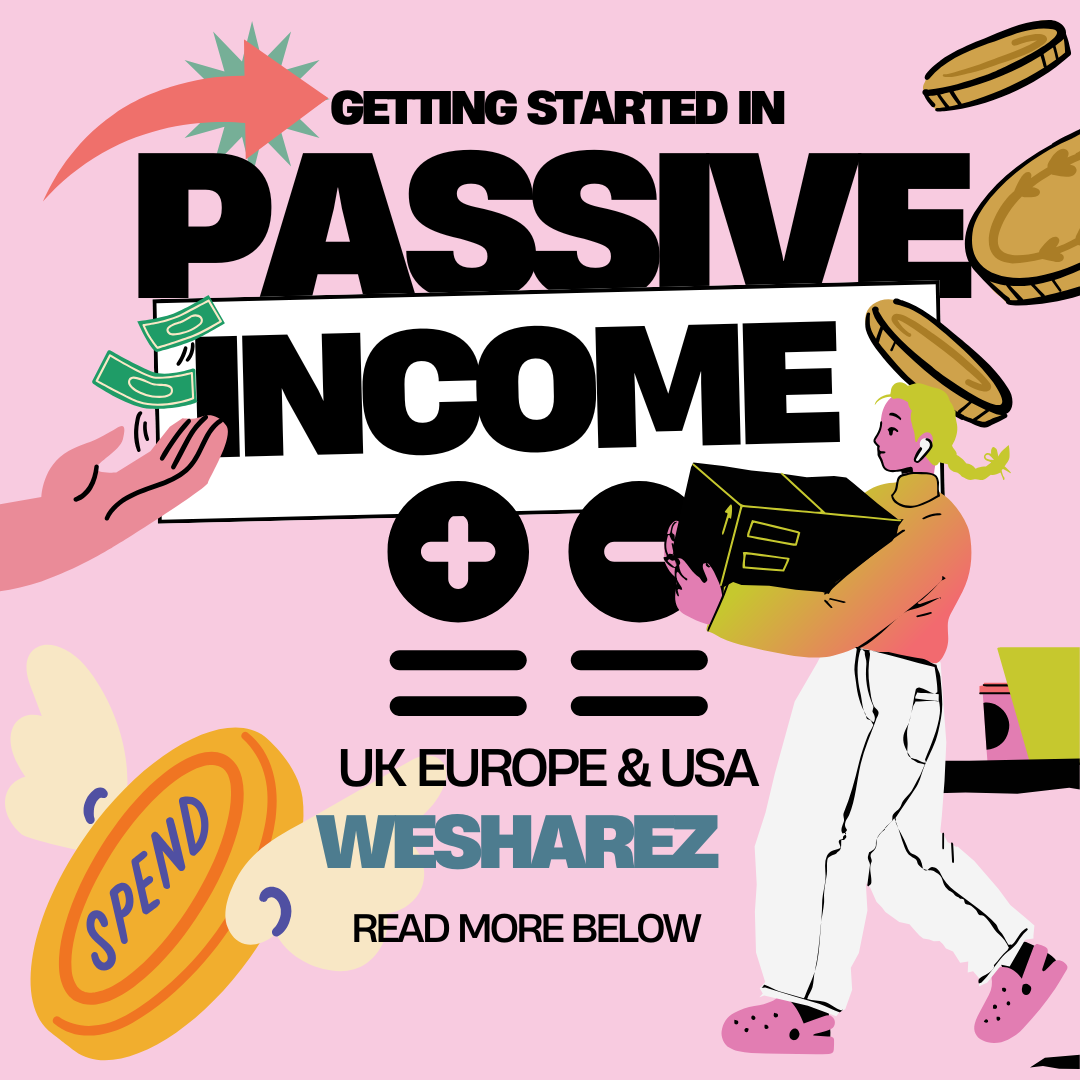
Passive income is often portrayed as the ultimate financial dream—earning money while you sleep. While it’s a powerful way to build wealth, it’s not without challenges. Here, we delve into the pros and cons of passive income, what to do (and avoid), and products and services that can help beginners in the UK, USA, and Europe.
What is Passive Income?
Passive income refers to earnings derived from investments, businesses, or side hustles that require minimal active involvement after the initial setup. Examples include rental income, dividends from investments, royalties, and earnings from online content or products.
Pros of Passive Income
Financial Freedom: Passive income allows individuals to break free from the cycle of trading time for money, offering opportunities for greater financial independence.
Diversified Income Streams: Relying solely on a salary can be risky. Passive income provides an additional cushion during economic downturns or job loss.
Scalability: Once established, passive income sources can grow with minimal effort, creating opportunities for exponential earnings.
Work-Life Balance: It’s an ideal way to supplement income without the need for a second job, giving you more time to focus on personal goals and family.
Cons of Passive Income
Initial Investment: Most passive income streams require significant upfront time, money, or effort. For example, property investments or creating digital products can take months or years to yield results.
Maintenance Costs: Passive doesn’t always mean zero effort. Rental properties, for instance, require ongoing management and maintenance.
Market Risks: Income from stocks, real estate, or other investments is subject to market volatility and economic changes.
Steep Learning Curve: Beginners may face challenges in understanding legal, tax, and financial complexities related to passive income ventures.
What to Do
Start Small: Test simple passive income strategies like investing in dividend stocks or creating low-effort digital products.
Leverage Technology: Use apps and platforms designed to simplify investments, real estate management, or online businesses.
Diversify: Don’t put all your eggs in one basket. Spread investments across multiple streams to reduce risk.
Educate Yourself: Take advantage of online courses, books, and webinars to learn about the nuances of passive income.
What Not to Do
Underestimate Effort: Avoid falling for “get-rich-quick” schemes. Most passive income sources require effort and patience.
Ignore Legal and Tax Implications: Failing to understand tax laws or legal requirements in your country can lead to fines or losses.
Overextend Finances: Avoid investing money you can’t afford to lose, particularly in volatile markets like cryptocurrency.
Delay Action: Analysis paralysis is common. Start small to build confidence and experience.
Tools and Services for Beginners
Investment Platforms:
UK: https://freetrade.io, https://www.hl.co.uk
USA: https://robinhood.com, https://us.etrade.com
Europe: https://www.etoro.com, https://www.degiro.com
Real Estate Platforms:
UK: https://www.propertypartner.co, https://www.bricklane.com
USA: https://fundrise.com, https://www.roofstock.com
Europe: https://estateguru.co, https://reinvest24.com
Digital Products:
Platforms like https://gumroad.com, https://www.shopify.com, and https://teachable.com allow creators to monetize digital content like eBooks or courses.
Passive Business Models:
Use https://sell.amazon.com/fulfillment-by-amazon.html to sell products with minimal logistics.
Affiliate marketing programs like https://affiliate-program.amazon.com or https://www.shareasale.com.
Learning Resources:
Websites: https://www.investopedia.com, https://www.coursera.org
Books: “Rich Dad Poor Dad” by Robert Kiyosaki, “The 4-Hour Workweek” by Tim Ferriss
Final Thoughts
Passive income is a powerful tool for building financial resilience and achieving long-term goals. However, it’s not a one-size-fits-all solution, and success requires planning, education, and consistent effort. By understanding the pros and cons, avoiding common pitfalls, and leveraging available resources, individuals in the UK, USA, and Europe can take meaningful steps toward financial independence. Start small, stay informed, and let your money work for you.

